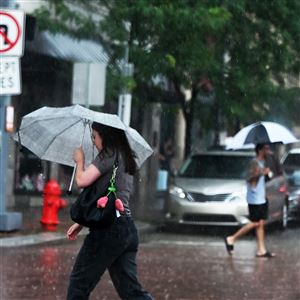During a solar eclipse, the moon moves directly between the Earth and the sun and, despite its relatively small size, manages to almost totally block the sun's disk.
Venus is much larger than the moon, but 26 million miles further away from the Earth, so the planet will cast a much smaller shadow during tomorrow morning's transit of the sun, with a silhouette only about 1/32 the size of the sun's disk.
But the dot will be large enough that observers can see the transit without extensive equipment. The event already will be under way at sunup and will conclude by 7:25 a.m.
As with a solar eclipse or any solar observation, observers must never look directly at the sun without proper protection. Sunglasses and smoked glass are not sufficient to protect the eyes from harmful radiation.
It is possible to look at the sun for brief periods using solar filters, such as a #13 or #14 welder's glass or special "eclipse glasses" in good condition.
Pinhole projection, sometimes used to view solar eclipses, won't work for the transit because it doesn't yield an image that is sharp enough to show the dot that is Venus.
Binoculars or telescopes can be used, even without a solar filter, editors at Sky & Telescope magazine advise. Don't look directly through the eyepiece, but instead place a white card behind the eyepiece and project the sun's image onto it.
But the safest and easiest way to observe the transit -- and the only way to see it from start to finish from Pittsburgh -- is via the Internet, said David Turnshek of the University of Pittsburgh. Links to observatories are available through this NASA Web site: sunearthday.nasa.gov
First Published: June 7, 2004, 4:00 a.m.















